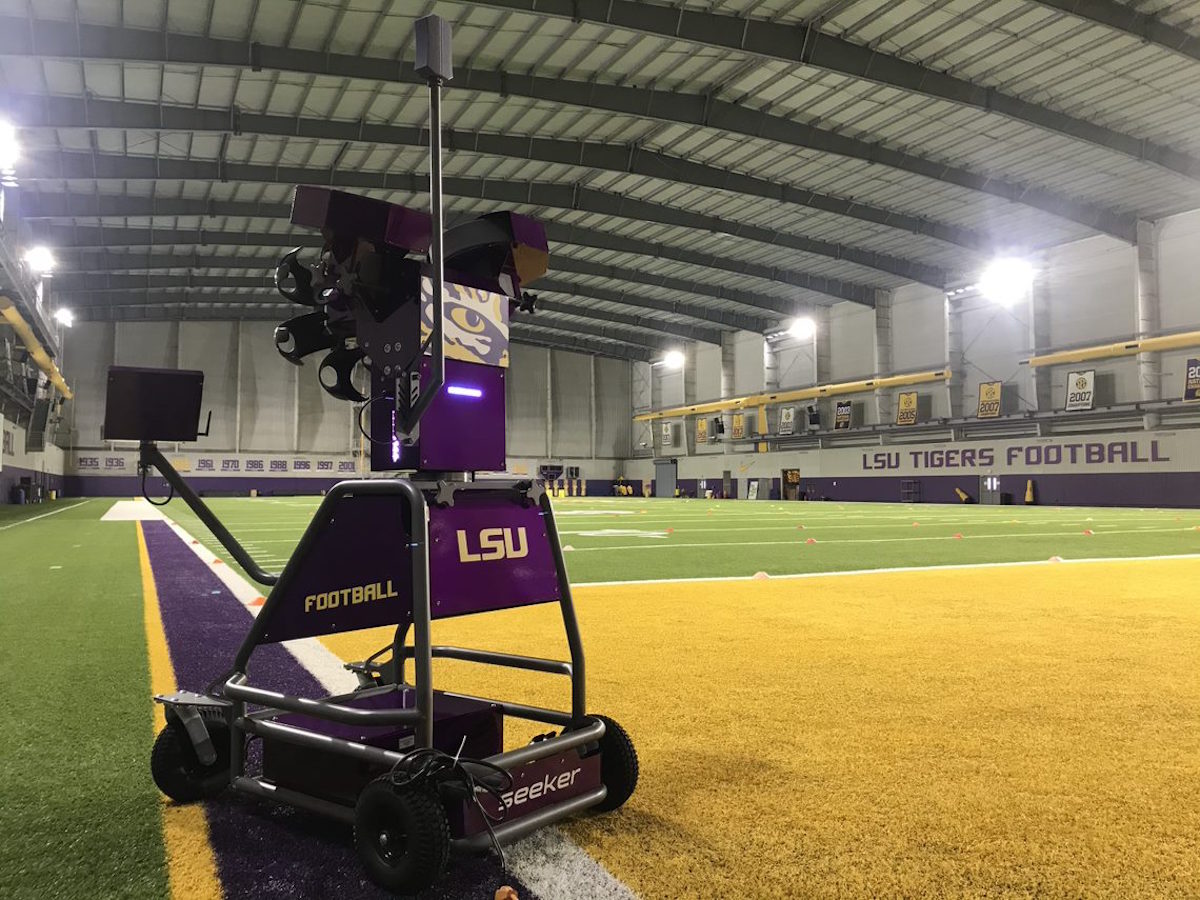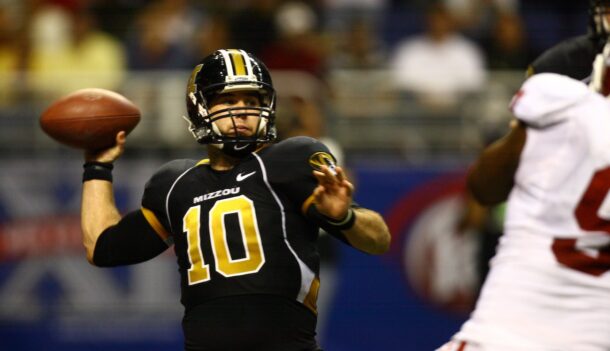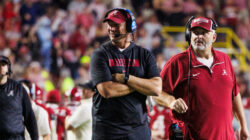
A robotic quarterback helped fuel LSU’s 2019 title run, and soon, it could be all over college football
By any metric, the 2019 LSU trio of Ja’Marr Chase, Justin Jefferson and Terrace Marshall was one of the best receiver groups we’ve ever seen in college football. They caught a combined 241 passes for 3,991 yards and 51 touchdowns in Joe Brady’s revolutionary offense en route to a national title.
Brady’s high-octane spread offense, coupled with the development and durability of Joe Burrow, was at the core of LSU’s passing game transformation. But there was another key development that became an integral part of the Tigers’ pass-catching routine beginning in 2019 (and more).
“The Seeker” is a 6-foot, 350-pound robotic quarterback that’s far more sophisticated than your typical “JUGS” machine. It can fire passes up to 100 MPH (it can also be programmed to throw fades), it has software that allows receivers to program routes into the touchscreen interface and catch a ball at a certain point (with a 6-inch radius) and above all else, it’s efficient. It can launch 6 balls in 10 seconds, and it gets off 5-6 more reps than a regular device.
Needless to say, LSU’s dynamic receiver trio never lacked reps in 2019.
“They loved it,” LSU Director of Athletic Training Jack Marucci told SDS. “It was a unique device and nobody had it at the time … they all experienced it, they all used it, they did all the testing with the device to look at how they catch the ball. I’d say positively they enjoyed it. It made it more fun to do the work.”
Granted, The Seeker couldn’t feather passes in between defenders like Burrow. It did, however, allow LSU’s wideouts to get reps without wearing out Burrow, Myles Brennan or anybody else.
“These wide receivers, they don’t need a quarterback. Now they can run routes where you put in the play scripts and let them actually have a practice without a quarterback,” Marucci said. “They just wanna catch footballs.”
That’s why the product appealed to Marucci.
One day, he got an email from the sports robotics company “Monarc.” Co-founders Igor Karlicic and Bhargav Maganti created The Seeker in 2014 in order to find a better way to practice. It took roughly 3 1/2 years to develop the software before cold-calling and emailing teams to gauge interest in the technology. By the time Marucci saw it, Monarc already had a relationship with Iowa, as well as a growing social media presence.
Love seeing the @LSUfootball pass catchers getting the most out of their custom Seeker!
Also getting awesome feedback from their staff on massive increases to #SpecialTeams effectiveness 👊🐯#Football #Collegefootball #CFB #NFLSU #NFL #SEC #WideReceiver #LSU #Tigers #WR #TE pic.twitter.com/RHtfw3a1uT
— Monarc (@MonarcSport) June 15, 2021
They brought The Seeker down to LSU and gave a demonstration for Brady, Steve Ensminger and Ed Orgeron, which sold them on the functionality of the product. It went beyond just delivering passes for the receivers. The Seeker is also used to simulate punts and kickoffs, and in a much more efficient way than any method — human or machine — than LSU had used previously.
When LSU used to do its punt cover drills in practice, the average amount of punts they got off in that allotted time was 10-12. The first time that they used The Seeker, they got 52 reps.
“The creativity that some of these coaches have with devising their own routes, we’re just a piece of that puzzle,” Karlicic said. “We were very lucky to have found that relationship (with LSU), but for us, it was about getting that feedback, getting that development and for them to be the best team they could possibly be. You saw the result of that play out.”
Monarc worked closer with LSU than any other program in 2019. It became such an essential piece of LSU’s practice routine that it traveled in the equipment truck for road games in 2020 so that punts could be simulated before games.
“There’s a lot of creative ways (to use it),” Marucci said. “All you have to have is a forward thinking to create these ways to help everybody out.”
One of the ways that LSU saw the benefits of it was on the analytics side. Pass-catchers wear these things that are called “Monarc Pulse tags,” which track their speed, location and acceleration. It can track reaction time and rep efficiency to allow the user to see what they do well and what they need to improve.
In addition to receivers and return specialists, Marucci said even LSU’s defensive backs and linebackers get use out of it.
The Seeker isn’t just an LSU and Iowa thing, either. It was used by Oklahoma, SMU, Virginia and Northwestern and at the NFL level, tight ends George Kittle, T.J. Hockenson and Hunter Henry. It can also be completely customized for any school or player. Kittle’s Joker-themed version of The Seeker was something he used in his backyard during the early days of the pandemic last year.
George Kittle having some fun in his backyard with his own custom Joker-themed Seeker! The best getting better 📈👀🔥@gkittle46 @HawkeyeFootball pic.twitter.com/cIA63SArJC
— Monarc (@MonarcSport) May 3, 2020
The goal for Monarc is for The Seeker to become a staple not just at the Division I level, but also for Division II and Division III schools. They customize packages based on need. According to Karlicic, most teams lease out The Seeker for $40,000 a year, and to buy it is more than 3 times as much.
For LSU, The Seeker’s results justify the investment. In addition to the 2019 season that shattered virtually every program (including the single-season record with 60 passing touchdowns), LSU also had the nation’s No. 15 passing offense in 2020. Never mind the fact that the Tigers had 3 starting quarterbacks and 2/3 of that dynamic trio of receivers wasn’t available. The Seeker fits perfectly into the offensive of identity modern day LSU.
Perhaps it’s only a matter of time before it becomes a modern staple of college football.
Connor O'Gara is the senior national columnist for Saturday Down South. He's a member of the Football Writers Association of America. After spending his entire life living in B1G country, he moved to the South in 2015.







